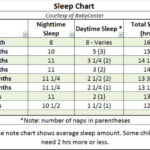Are your child itching and throwing temper tantrums?
Most toddlers do!
It’s one thing to see your child suffer from constant itching and scratching – and another to see scratching and temper tantrums combined. Double the trouble. Stress, anxiety, frustration, and immune system responses can all be wrapped up in both itching and emotional meltdowns, so they often go hand in hand. An emotional or anxiety-based temper tantrum can easily trigger itching and other allergies, sensitivities, and breakouts, so it’s important to try to treat both symptoms by understanding they may have a shared cause. Most children exhibit temper tantrums because of stress, frustration, anxiety, fatigue, or dietary issues. If you are aware of your child’s food allergies, make sure they aren’t sneaking into his or her diet. If you’re still searching, make sure that the top food allergens (milk, eggs, nuts, seafood, soy, wheat), sugars, preservatives, and other food additives aren’t the cause of emotional sensitivities. For parents, however, it can be irritating and challenging to deal with. Perhaps you are wondering what the norm is for temper tantrums, how they differ at each age, and how you can manage them as a parent. As you begin to unravel the world of tantrums, journal the date, time, why the tantrum began, and the underlying reason you think the tantrum was caused. This may help you see a pattern.
Scratching:
During a tantrum, scratching becomes more of a coping mechanism over the skin being itchy itself. The scratching turns into self-soothing and/or habitual. On the other hand, emotions like anger can trigger itchiness. Having a ScratchMeNot on hand can really help reduce the skin damage due to repeated scratching. With Flip Mitten Sleeves as a tool to cover the hands during a scratching moment, it can give your little one relief and yourself some sanity knowing their skin is safe. As you plan for any type of tantrum, be sure to plan for the scratching. I’ve found that it’s best to give them our expectations before a tantrum begins. Relay this to children toddler-aged or older. What signifies that the tantrum is over?
Is it when the:
- crying, screaming, whining stops?
- Scratching stops or calms?
- Sitting still?
- Standing or laying down quietly?
- A hug
- Sitting together?
I have a friend who lets her children cry, scream or yell it out in the confines of their room until they have calmed down. They are not allowed to be around family or interrupt family time with tantrums. Once they have calmed down, they can rejoin the family. Another person must sit down until the crying and scratching have stopped. She checks on her little one every 2-3 minutes to see if she is ready to calm down. I personally, have tried a myriad of ideas as each of my children is different. Some want to be held until they calm down, others want space and time to calm down on their own. Some would prefer to follow me everywhere crying until they feel better. It’s not easy but testing out different methods can produce a healthy way to handle tantrums where your little one feels heard and seen.
Maintain your cool at all times. Whatever you do, remain calm. If you scold or threaten your child while he or she is already having a tantrum, the tantrum may worsen. As previously said, children who have lost control of their emotions may experience anxiety or fear of how they feel. If you yell, you may aggravate the problem. As a result, your initial move should be to calm down your child without submitting to negative behavior.
Here’s how to put an end to each type of tantrum:
- Tantrums due to exhaustion/frustration Give your kid a sleep or snack, provide assistance, or take a break from whatever he or she is doing.
- Tantrums for attention/demand. This is frequently a reaction to you saying no. Smile, reassure your child that you love him or her, make him or her feel protected, and calmly offer to talk to him or her again when he or she is calmer. “When you’re done screaming, tell me that you are ready to talk.”:
- Tantrum of refusal This occurs when the child says no, usually because you have asked him or her to do something that he or she does not want to do. If the situation isn’t too dire, try to be gentle with your child. If it’s snack time and your child doesn’t want to eat, don’t force him/her to eat if it will cause a tantrum.
- Tantrums that create disruption. These frequently occur when children are misbehaving. Place your child in a separate room and give him or her a few minutes of time out. Take your child outside if you are not at home. Help your child understand that misbehavior will not gain him or her attention from you or anybody else. When a toddler is throwing a tantrum, he or she may look around to see if you are paying attention to them.
- Tantrum of rage. This is when your child loses physical and emotional control. S/he may yell, kick, or hit, endangering himself/herself or others. Some toddlers are oblivious to the depth of their own emotions. Hold your child tightly and assure him/her that you will continue to do so until he/she calms down and regains control.
Whatever signifies the end of a tantrum, should be vocalized to your child so they too are aware of when the tantrum is truly over. Creating expectations lays out the boundaries children need to excel. Initially, it seems like anything can trigger a tantrum, yet by taking an active moment to watch, listen, learn, and act with patience, you may be surprised at the long-term results!
Allergies:
If allergies are the issue, they can spark anxiety. Children are capable of being as uncomfortable, frustrated, and irritated as adults – and sometimes they just get worn down from all the stress caused by allergic reactions. In this case, seeking soothing, calming, and relaxing options for your child like tea, calming baths with essential oils, stories, non-inflammatory foods, and/or medications may be a good option.
Fatigue:
A temper tantrum could be an emotional sign of pure fatigue. Tantrums can actually provide a great opportunity to learn more about where your child’s limits are, their signs of fatigue and anxiety, and what cues they give before acting out. As babies grow into toddlers, they begin to miss naps or transition to 1-2 naps a day. An increase in tantrums around nap time could mean more day sleep is needed. Try your best not to shop or run errands with a sleepy child, tantrums are bound to occur. Take a look at this sleep chart to determine if your child is getting enough sleep.
Sleep aids such as melatonin may relax your little one to rest and move into a deeper sleep.
To the health of your family… How do you handle tantrums? Leave a comment below!


